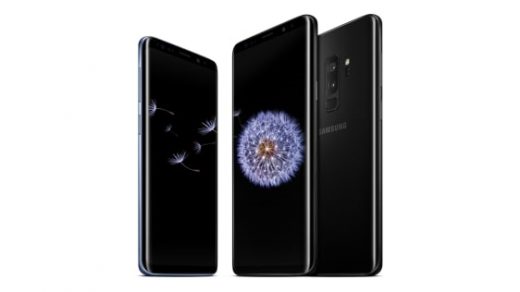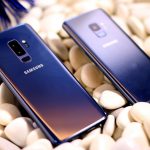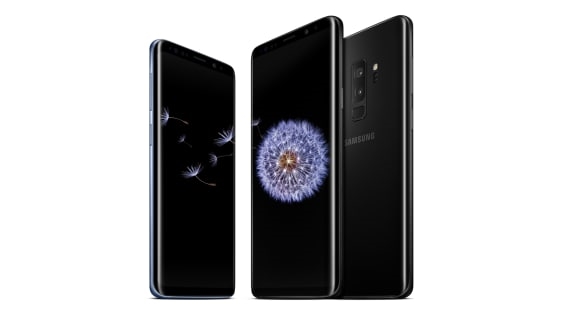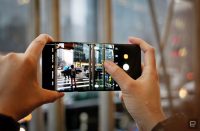Samsung’s Galaxy S9+: Once Again, The Hardware Is The Highlight
Last April, when Samsung’s Galaxy S8 and S8+ went on sale, Apple’s iPhone X was a murky rumor rather than the competition. But in retrospect, the S8 and S8+ offered a vision of the future of smartphones that was quite different from what the X delivered when it arrived in the fall.
Both Samsung and Apple wanted to provide an immersive, all-screen experience in a size that wasn’t unwieldy in the hand. Samsung did that by making its phones tall and skinny, with screens that curved right off the left and right edges but kept some bezel on the top and bottom. Apple, meanwhile, didn’t go for the Galaxy phones’ statuesque aspect ratio or edge-to-edge sides, and crammed the X’s camera and Face ID sensor into a notch up top.
To make room for more screen on the phone’s front, Samsung made the home button virtual and moved the fingerprint sensor to the backside. Apple did away with the home button altogether, and ditched the fingerprint sensor in favor of facial recognition.
Now Samsung is releasing the Galaxy S9 and S9+, which went on sale on Friday. For the most part, what’s striking is how closely they stick with the design decisions that the company made for the S8 and S8+. These new phones don’t ape the iPhone X, as some of their recently announced Android brethren do. They even have headphone jacks, a really handy feature that Apple decided was obsolete (at least on smartphones) back in 2016.
Samsung provided me with a Galaxy S9+ for review, and it’s what you might expect judging from the last few generations of Galaxy S phones: a meaningful upgrade to what was already an exceptional piece of smartphone hardware. The company, once haunted by a reputation for copying Apple, has developed a sensibility of its own that’s valid and appealing. But it’s also no surprise that the S9+ software—most notably the Bixby Voice assistant—still isn’t an argument for choosing this phone over another. It occasionally feels as if it’s at war with the phone’s Android operating system, a long-standing trait of Galaxy S phones.
Besides having a larger display than the Galaxy S9–6.2? vs. 5.9?—the Galaxy S9+ also has two rear cameras, 6GB of RAM instead of 4GB, and a bigger-capacity battery. The phone officially lists for $840; the price you’ll pay varies by carrier and there are deals to be had.
The Same, Only Better
Everything that was great about the Galaxy S8+ is equally appealing in its successor, or slightly more so. The tall, curvy Super AMOLED screen is gorgeous—and now brighter—and provides sprawling real estate without being so overly wide that it’s an impossible strain on your thumb or pocket. Even though there’s still a skosh of bezel at the top and bottom, the screen is at least as immersive as the iPhone X’s notched display. As with the Galaxy S8 phones, the glass back feels so nice in the hand that it’s a shame to put it in a case, even though you should. (Glass phones, being slippery, are probably especially prone to accidental tumbles, a mishap that can be, um, shattering.)
Samsung fixed the only thing about the S8/S9+ design that was downright bad: The fingerprint scanner is now underneath the camera rather than alongside it, making it much easier to find with your fingertip without smudging the camera lens in the process. The company also gave its new phones stereo speakers, pumped up their maximum volume, and added Dolby Atmos (which was turned off by default on my review unit) for a rather effective 3D-audio effect that doesn’t sound like it’s coming out of a device you can stick in a shirt pocket.
The tagline for its new phones—”The Camera. Reimagined.”—indicates where Samsung tried to make its biggest strides. That’s especially true with the Galaxy S9+: Like Apple’s iPhone X and iPhone 8 Plus, it has has two rear cameras that let you choose a 2X telephoto mode without degrading image quality. Having used dual-camera phones since the iPhone 7 Plus came out in 2016, I’d hate to go back.
Both the S9 and S9+ get Samsung’s big new camera innovation. Their main rear cameras feature dual-aperture shutters, a Lilliputian twist on an age-old standard feature of conventional cameras. Tiny blades allow the lens to let in more light in murky environments, which helps combat the single most persistent problem with smartphone cameras: the lower the light, the higher the chances that your photo will be a blurry mess.
Comparing photos I took with the Galaxy S9+ and iPhone X in dim environs such as restaurants, the benefits of Samsung’s new technology were readily apparent. Even when my S9+ low-light shots didn’t look fantastic, they were crisper than those from the X. In the pictures below, for instance—the Galaxy S9+ one is on top—you can particularly see the difference in the background.

For video, Samsung devoted most of its energy to improving the slow-motion mode, which it says is the second most popular setting after the default auto mode. It can now shoot 960 frames per second, and lets you draw a box in the viewfinder that triggers slow-mo recording when something enters it. (This worked most reliably for me when that something was quite close.)
What I liked most about the Galaxy S9+ as a camera wasn’t its various modes and options, but the simplicity of shooting in Auto mode. Purists will do serious comparisons of Samsung’s new phones with those from Apple and Google, but when I just pressed the S9+ shutter button, I was almost always happy with the results. Herewith, a few samples. (Note: Uploading them into our publishing system left them less sharp than the originals.)
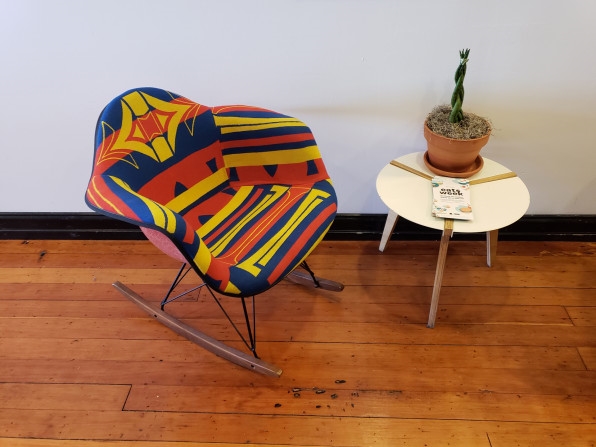






Not-So-TrueDepth
With the Galaxy S9 and S9+, Samsung hasn’t introduced a security feature precisely like the iPhone X’s Face ID, which uses the new TrueDepth camera to map your face in 3D to verify that you’re you. But it has taken two existing biometric security features—its own flavor of face recognition and iris scanning—and combined them into something it calls Intelligent Scan. The phones check out either your face or your irises, depending on which technique is likely to be most reliable in the lighting environment you’re in.
Though Intelligent Scan is theoretically the best of both worlds, I found the reality to be frustrating. Some of the time, it unlocked the S9+ with speed and simplicity that approached those of Face ID on the iPhone X, albeit with a pulsing red LED that made the experience less invisible. But it only worked that well if I wasn’t wearing my glasses. When I had them on, it rarely worked at all.
This is hardly a crushing blow to the Galaxy S9 experience: The phone’s backside fingerprint scanner worked instantly and perfectly every time, allowing me to turn off Intelligent Scan without any downside. It’s a classic example of the difference between Apple (which got Face ID right and then abandoned Touch ID) and Samsung (which gives you multiple ways of achieving a task, but doesn’t match Apple’s level of polish).
TrueDepth’s absence is also felt with AR Emoji, a new feature in the camera app that is impossible to describe as anything other than Samsung’s answer to the iPhone X’s Animoji. The big selling point is that you can use the phone’s front-facing camera to take a shot of yourself which then gets turned into a tiny full-body caricature you can customize. You can also create a set of animated GIFs starring your doppelganger, most of which express various levels of good cheer.

This is all kind of cute, and not that much like Animoji. But you can also do something exactly like Animoji by having your AR Emoji persona mimic your lip movements and facial expressions as you stare into the front-facing camera, recording the results to share with friends. And here the results are too crude to compete with what Apple manages using TrueDepth. AR Emoji don’t respond to expression changes, mouth motions, and head turns with anywhere near the uncanny subtleness of Animoji, and mine tended to wink in an unnerving fashion.
But just for the heck of it, I did make some AR Emoji Karaoke featuring a green-haired simulacrum of myself and a couple of stock critters. (Samsung also snagged the rights to do AR Emoji versions of Mickey and Minnie Mouse and, eventually, other Disney characters.)
I’m still finishing up my Galaxy S9+ review, but to hold you over, here’s some AR Emoji Karaoke. pic.twitter.com/46HQgv3fJ7
— Harry McCracken (@harrymccracken) March 8, 2018
Too Many Assistants
When the Galaxy S8 and S8+ hit the market, they had a dedicated button on the side for Samsung’s Bixby assistant. But Bixby Voice, the portion of Bixby you can control by talking, wasn’t ready. So the button only lets you pull up Bixby Vision, a quirky app that did things like identify products when you pointed your phone at them. It didn’t do them very well, though—and while it’s still there on the new phones, with new features such as the ability to translate signs in foreign languages and see yourself with virtual makeup, it remains idiosyncratic rather than essential.
Since last year’s phones shipped, Samsung has also released Bixby Voice, which you can summon on the new phones with a press of the Bixby button or by saying “Hi Bixby.” It’s roughly akin to Google Assistant—also available on the phone—but with an interface that can pop up over whatever app you’re using rather than taking over the screen. It also awards you “XP Points” as you use it, an act of gamification presumably designed to encourage you to stick with the feature and explore its powers. (In case you wondered, I’m currently ranked 83,296 among all Bixby Voice users.)
Most important, Bixby Voice aims to give you a deeper level of control over your phone than the Google Assistant. It understands commands that the Assistant doesn’t, such as “change my ringtone” and “increase screen brightness.” Not surprisingly, it has deep hooks into standard Galaxy apps such as Email and Calendar. But it also knows about functionality within third-party apps, allowing you to issue voice commands such as “Share my last photo on Instagram.”
For all that’s intriguing about Bixby Voice, there’s no getting around the fact that the Google Assistant is far smarter and more refined. The Assistant lets you say “OK Google” and then immediately launch into a command, but if you pull up Bixby with a “Hi Bixby” rather then pressing the Bixby button, you need to pause before continuing. And the Assistant is much better at comprehending almost any phrase I throw at it: It understood the request “directions to the Tadich Grill” while Bixby thought I was asking about a Terrace Grill or Tactics Grill. The Assistant also responded properly to “Show me my first appointment tomorrow,” while Bixby showed me a schedule item three weeks in the future.
Beyond the specific instances where Bixby shines or falls short, there’s an overarching question: Given that the new Galaxy phones run Android and therefore already have a capable voice-powered agent in the Google Assistant, does it make sense for Samsung to introduce another one? It’s tough to envision many people using Bixby and the Assistant, keeping track of which helper is best at which tasks. If Bixby Voice—which you can disable if you want—were radically better than the Google competition, it might be all you need. But it’s nowhere near being so, and given Samsung’s history with software, there’s not a lot of reason for optimism.
Not that I want to suggest the chances of the company getting as good at software as it is at hardware are zero. After all, it wasn’t that many years ago that the Galaxy S line was notable for its decidedly unambitious industrial design, and the progress that Samsung made on that front once it put its mind to it has been remarkable. Still, I can’t help but think of a plaintive remark in an old Engadget piece by Chris Ziegler. “Here’s a hint … Sammy,” he wrote. “When you make hardware this good … you don’t need to try to justify your existence with a lame UI skin!” He was writing about the very first Galaxy S phones back in 2010, but his point remains resonant in 2018.
A future Galaxy S phone that led pundits to reassess the truism that Samsung lacks software chops would be welcome. But so would one that dialed back the software customizations and let the hardware—and Android—shine. And that latter scenario seems like a way more realistic goal for the company to pull off in time for the Galaxy S10 and S10+.
(21)

